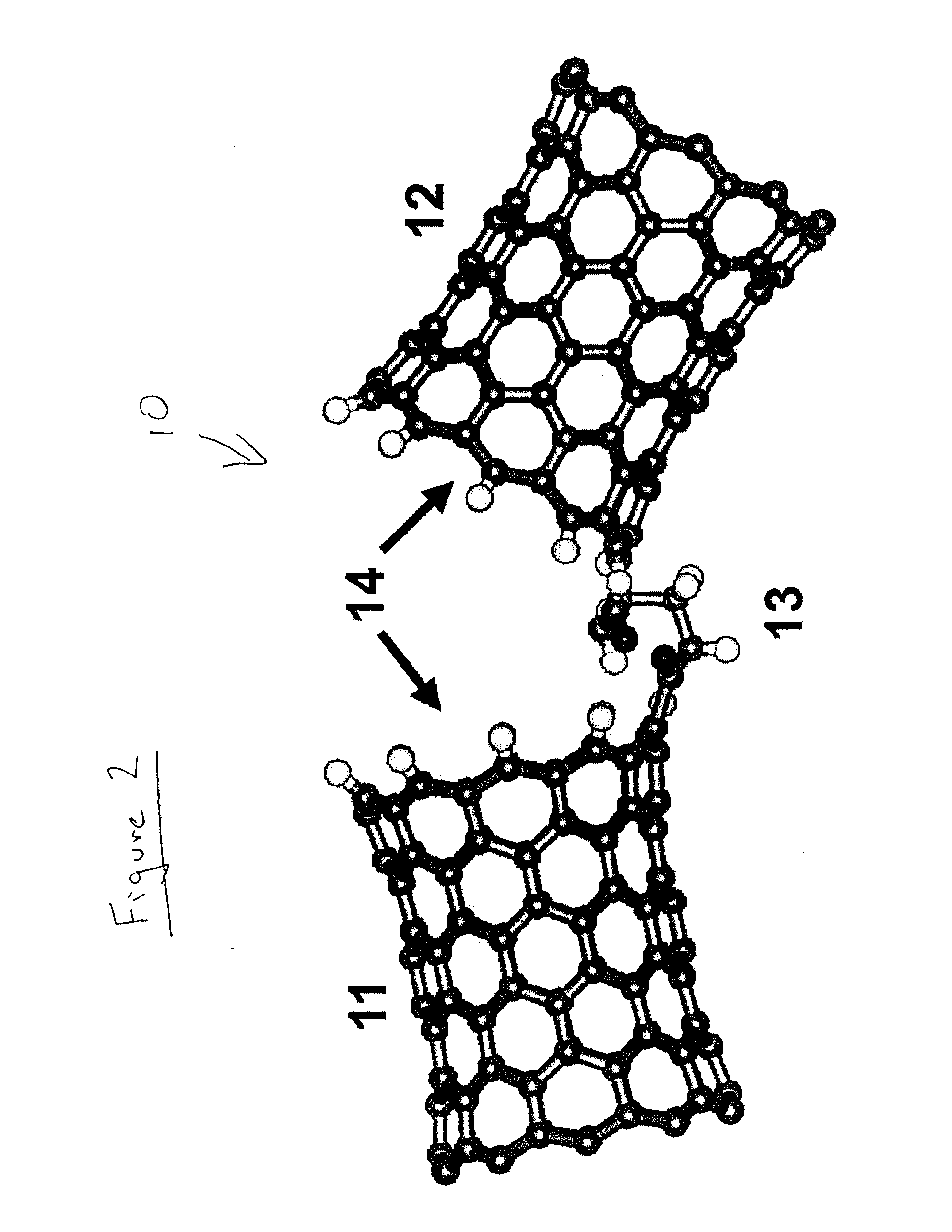Molecular resonant tunneling diode
a tunneling diode and resonant technology, applied in the field of diodes, can solve the problems of creating brittle dna segments that are unfavorable for use in complex circuit geometries, and the simplicity of such molecular devices lends itself to very few practical applications
- Summary
- Abstract
- Description
- Claims
- Application Information
AI Technical Summary
Problems solved by technology
Method used
Image
Examples
Embodiment Construction
[0016]The present invention provides molecular resonant tunneling diode (RTD) devices including a molecular bridge between two semi-conducting leads. FIG. 1 illustrates a molecular-based resonant tunneling diode (RTD) 10 according to one embodiment. The RTD 10 includes two semi-conductor leads, the source 11 and drain 12, bound together by organic biological material 13. The organic material 13 is driven by the semi-conducting drain 12 and source 11. The semiconducting leads 11,12 on both sides of the organic material 13 provide a highly controlled source and drain interface which enhances the resonant-tunneling behavior of the organic material 13. Where prior methods and devices used metallization of the organic self-assembled material to improve conductivity and provide an ohmic interconnect, the present invention takes advantage of the inherent tunneling aspect of the organic material which is enhanced by the semiconducting source and drain terminals.
[0017]The molecular portion o...
PUM
 Login to View More
Login to View More Abstract
Description
Claims
Application Information
 Login to View More
Login to View More - R&D
- Intellectual Property
- Life Sciences
- Materials
- Tech Scout
- Unparalleled Data Quality
- Higher Quality Content
- 60% Fewer Hallucinations
Browse by: Latest US Patents, China's latest patents, Technical Efficacy Thesaurus, Application Domain, Technology Topic, Popular Technical Reports.
© 2025 PatSnap. All rights reserved.Legal|Privacy policy|Modern Slavery Act Transparency Statement|Sitemap|About US| Contact US: help@patsnap.com



